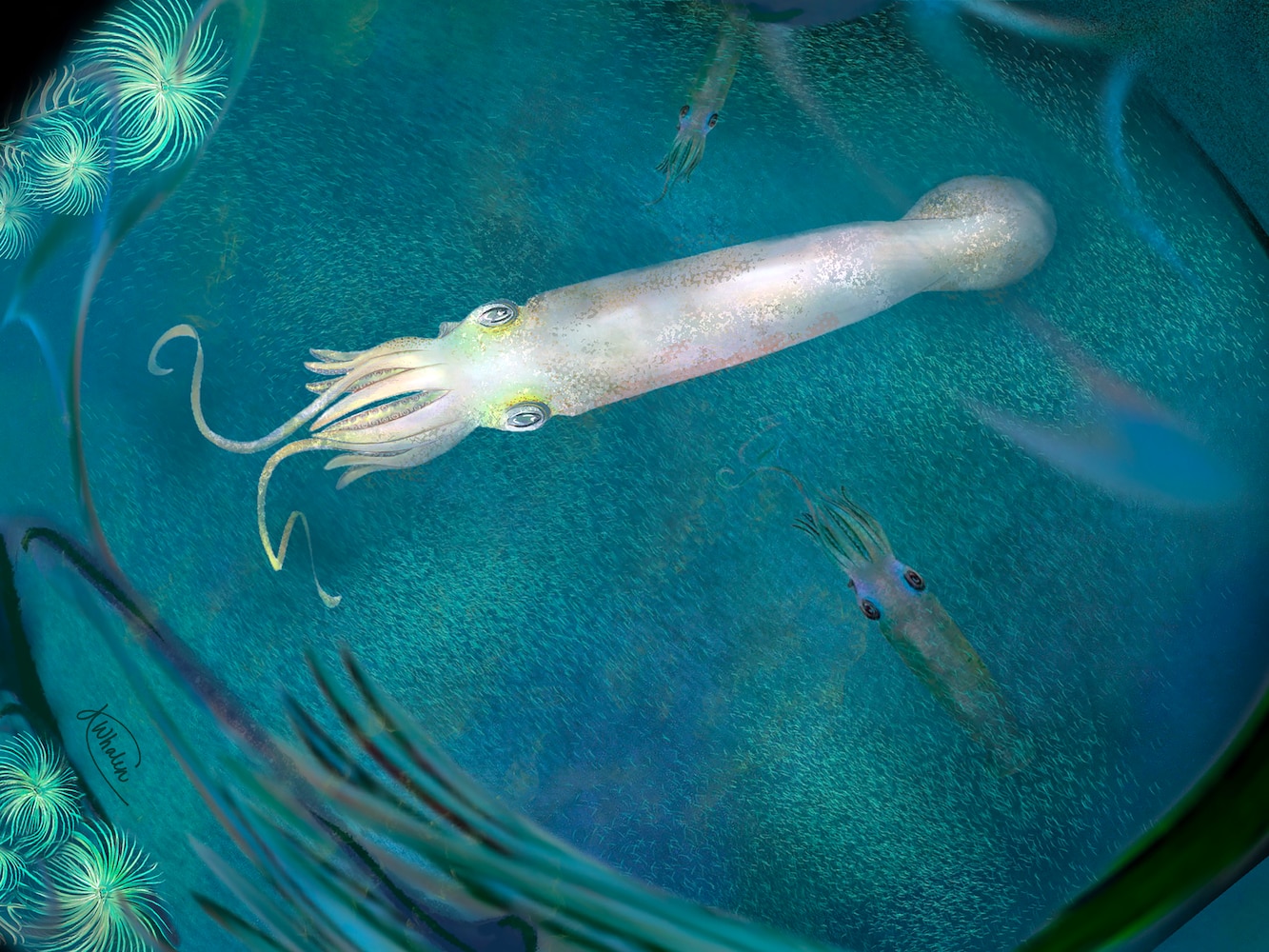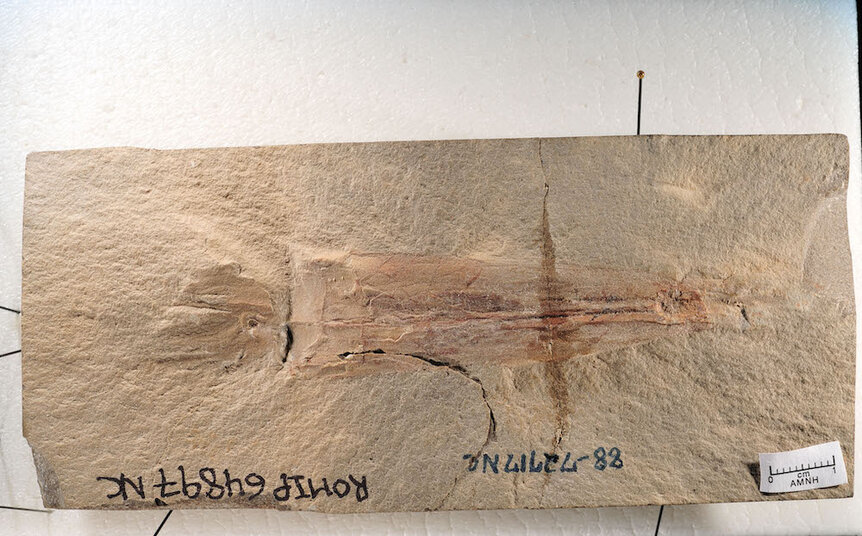Create a free profile to get unlimited access to exclusive videos, sweepstakes, and more!
Vampire-squid thing named after President Biden had 10 arms to grab you with
No word on whether any cephalopods are running for office.

There are vampires in the deep, and they have been lurking there for about 330 million years.
Vampyropods are not actually vampiric — though these cephalopods do love the darkness. The Dracula-like appearance of their mantles could almost pass for Bela Lugosi’s iconic cloak. Now a new fossil has revealed that these nyctophilic creatures have been around over 80 million years longer than anyone thought they were. And Syllimsimpodi bideni didn’t just have instant vampire cosplay, but 10 arms that prey was unlikely to escape from.
This extinct relative of squid, octopi, and cuttlefish somehow survived fossilization, which is rare in vampyropods because their soft bodies (with internal shells) can degrade so easily. It is also the first known vampyropod to have 10 functioning arms. Even the suckers are preserved. It first emerged from the depths of time when President Biden had just been inaugurated, was named in honor of his dedication to science, and is making history among cephalopods.
But what could have happened to those two extra appendages? Paleontologist Christopher Whalen of Yale University and the American Museum of Natural History, who led a study recently published in Nature Communications, thinks they may have been two too many.
“We think that 10 arms is the ancestral condition for all cephalopods, so Syllipsimopodi would have inherited its 10 arms,” Whalen told SYFY WIRE. "As to why two were lost, we do not know for sure, but this type of reduction is a consistent evolutionary pattern across all groups.”
Freaky things with 10 arms would have had to put more energy into maintaining them. Meaning, they would also need more food, which meant more hunting that probably tired them out. Organisms evolve to get maximum benefit at minimal cost, so it is possible that no extant cephalopods have 10 working arms, because it wasn’t worth it. Vampire squid that still exist only have eight arms, with two vestigial filaments that hardly do anything. What they do have in common with Syllipsimopodi, besides the Dracula cloak, is a gladius, or flattened inner shell.
Octopus species descended from Syllipsimopodi have completely lost those extra arms. Even filaments were too much for them to bother with. Phenomena like this have happened throughout evolution, and even the first vertebrates, the ancestors we share with everything else that has a spine, had more than five toes before the useless ones vanished. The early horse Eohippus had three toes on each foot. Pressure for extra investment is also the reason astronauts lose muscle in space. When microgravity does the heavy lifting and you don’t have to hold yourself up, muscle tissue, which needs extra energy for the body to maintain, degrades.
Another mystery about vampyropods has supposedly risen to the surface with the discovery of Syllipsimopodi bideni.
“Syllipsimopodi suggests that vampyropods are at least 82 million years older than previously thought,” said Whalen. “Our model of evolutionary interrelationships further suggests that a group of fossils called phragmoteuthids are not the ancestors of vampyropods.”
This questions the previous theory of what coleoids — vampyropods and other soft-bodied cephalopods with internal shells — evolved from. Phragmoteuthids are extinct coleoids that appeared like squid with conical shells. If vampyropods go back so much further than what was assumed, that makes it possible that they evolved from some earlier cephalopod that didn’t have a shell that it ended up shedding. The gladius comes from an earlier bony structure known as the proostracum, which was believed to be the last remaining chamber of a cephalopod’s chambered shell, or phragmocone. The nautilus, spirula, and cuttlefish have held on to it.
No more shelled cephalopods exist except the chambered nautilus. The spirula, which could be mistaken for a squid but is actually the last of an ancient lineage, and cuttlefish have retained the phragmocone internally. Cephalopods are thought to have lost the top, bottom, and all internal chambers of this shell, except the proostracum. Whalen agrees with more recent hypotheses that argue the proostracum was not even part of the phragmocone. Syllipsimopodi is older than any phragmoteuthid.
“The age of our fossil indicates that vampyropods must have developed a gladius relatively soon after the origin of coleoids,” he said. “Therefore, a simpler evolutionary model that requires fewer transitions is preferable to a more complex and gradual model.”
There has been no word on any cephalopods planning to run for office.



























